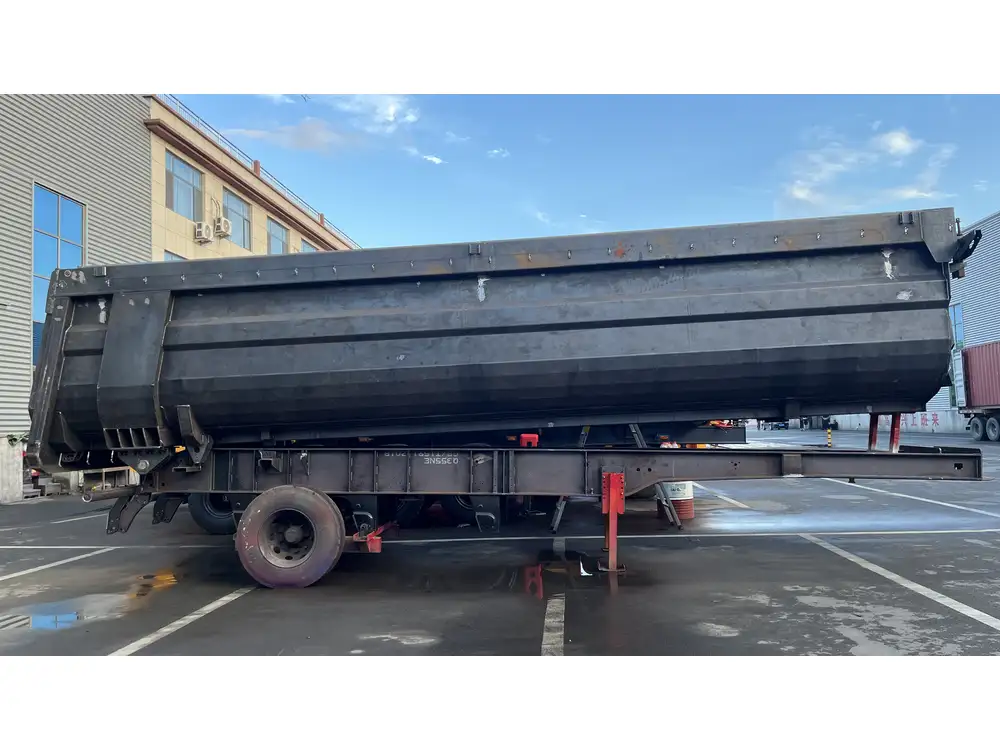In the world of agriculture and freight transportation, understanding the capacity of semi-trailers is essential for efficient planning and logistics. Farmers and logistics companies often find themselves wondering, “How many bushels of grain does a semi-trailer hold?” This inquiry not only affects transport costs but also influences decisions about storage, distribution, and sales strategies. In this article, we will delve into the factors impacting semi-trailer capacity, provide clear comparisons of common types of trailers, and guide you through key calculations to enhance your operational efficiency.
Types of Semi-Trailers Used for Grain Transport
Standard Grain Trailers
Grain transport starts with the quintessential standard grain semi-trailer. Often characterized by their customizable structures, these trailers can vary significantly in length and design. The most common specifications include:
- Length: Usually between 40 to 53 feet.
- Width: Standardly 8.5 feet wide.
- Height: The height can range from 10 to 14 feet, with some variations permitting additional loading capacity.
| Type of Trailer | Length (Feet) | Capacity (Bushels) |
|---|---|---|
| Standard Grain Trailer | 40 to 53 | 500 to 1,000+ |

Key Characteristics
- Low-Profile Design: Facilitates aerodynamics during transport.
- Hopper Design: Permits efficient unloading through gravity.
Walking Floor Trailers
The walking floor trailer serves specific needs for loading and unloading. This semi-trailer employs a unique system of moving floors, enabling goods to slide out without tipping.
| Type of Trailer | Length (Feet) | Capacity (Bushels) |
|---|---|---|
| Walking Floor Trailer | 40 to 53 | 600 to 1,200 |
Key Characteristics
- Versatile Loading: Ideal for various products, including grain.
- Efficient Unloading Mechanism: Minimizes labor and time.

Hopper Bottom Trailers
Another popular choice among grain haulers is the hopper bottom trailer. This design allows bulk grains to be easily loaded and discharged through hoppers located at the base.
| Type of Trailer | Length (Feet) | Capacity (Bushels) |
|---|---|---|
| Hopper Bottom Trailer | 38 to 42 | 800 to 1,200+ |
Key Characteristics
- Stability and Safety: Low center of gravity helps maintain control during transit.
- Easier Unloading Process: Fasten the process when transferring grains.
Calculating the Hold Capacity of Semi-Trailers
To assess how many bushels of grain a semi-trailer can hold, we must consider several critical factors such as volume and density of the grain.

1. Volume Considerations
The volumetric capacity of a trailer can be determined using the formula:
[ \text{Volume} = \text{Length} \times \text{Width} \times \text{Height} ]2. Density of Grain
Different grains have different densities. For instance, wheat has a density of about 60 pounds per bushel, while corn is approximately 56 pounds per bushel.
3. Total Bushel Calculation
To convert the volume to bushels for a specific type of grain, use:
[ \text{Bushels} = \frac{\text{Volume (cubic feet)} \times 0.8}{\text{Grain Density (pounds per bushel)}} ]
Example Calculation
Let’s consider a standard semi-trailer with the dimensions:
- Length: 53 feet
- Width: 8.5 feet
- Height: 13.5 feet
Determine the volume: [ \text{Volume} = 53 \times 8.5 \times 13.5 = 6,031.875 \text{ cubic feet} ]
Convert to bushels for corn at a density of 56 pounds per bushel: [ \text{Bushels} = \frac{6,031.875 \times 0.8}{56} \approx 86 \text{ bushels} ]
Adjusting for load factors gives us an approximate total capacity of over 1,000 bushels.
Factors Affecting Capacity
While calculative formulas provide a baseline, several practical factors can influence the effective capacity:
1. Load Restrictions
Regulations often limit the weight of loads to prevent road damage and improve safety. The Federal Motor Carrier Safety Administration (FMCSA) provides guidelines on load limits based on trailer sizes.

2. Grain Type
As previously mentioned, the density of the grain directly influences the bushel count. Falling back to the previous example, the same trailer would hold different amounts if carrying soybeans (approximately 60 pounds per bushel).
3. Loading Method
Methods of loading can also reduce the effective capacity. Tightly packed loading maximizes space, while loose packing can result in wasted volume.
4. Weather Conditions
Extreme weather conditions, particularly wet grain, can affect load weight and alter the necessary precautions for handling.

Important Considerations for Operators
To maximize the effectiveness of their trailers, operators should consider:
Invest in Quality Equipment: Opting for trailers with high durability and designed specifically for grain transport can lead to less down time and better overall performance.
Regularly Maintain Trailers: Maintaining equipment prevents breakdowns and ensures safety compliance.
Stay Informed on Regulations: Abiding by federal and state laws is crucial for transport efficiency and avoiding fines.
Optimize Routing: Planning routes efficiently ensures reduced fuel consumption and enhances delivery timeliness.
Conclusion
The question “How many bushels of grain does a semi-trailer hold?” reveals a multifaceted answer that hinges on specific trailer types, dimensions, and grain densities. With proper understanding and utilization of these elements, one can ensure that grain transport operations are both efficient and cost-effective.
For farmers and transport operators, it pays to invest time in assessing the types of trailers suited for their needs, understanding the intricacies of capacity calculations, and considering external factors that impact grain transport. This comprehensive perspective not only enhances operational efficiency but also enriches logistics management, allowing for more strategic planning and implementation in the agricultural sector.
By staying ahead of the curve with accurate knowledge of semi-trailer capacities, operators can optimize their grain transport while ensuring compliance and safety.



